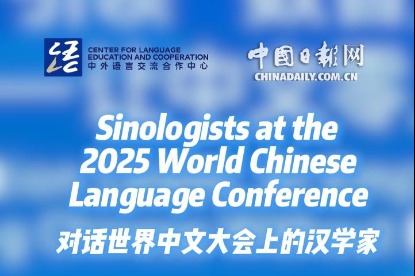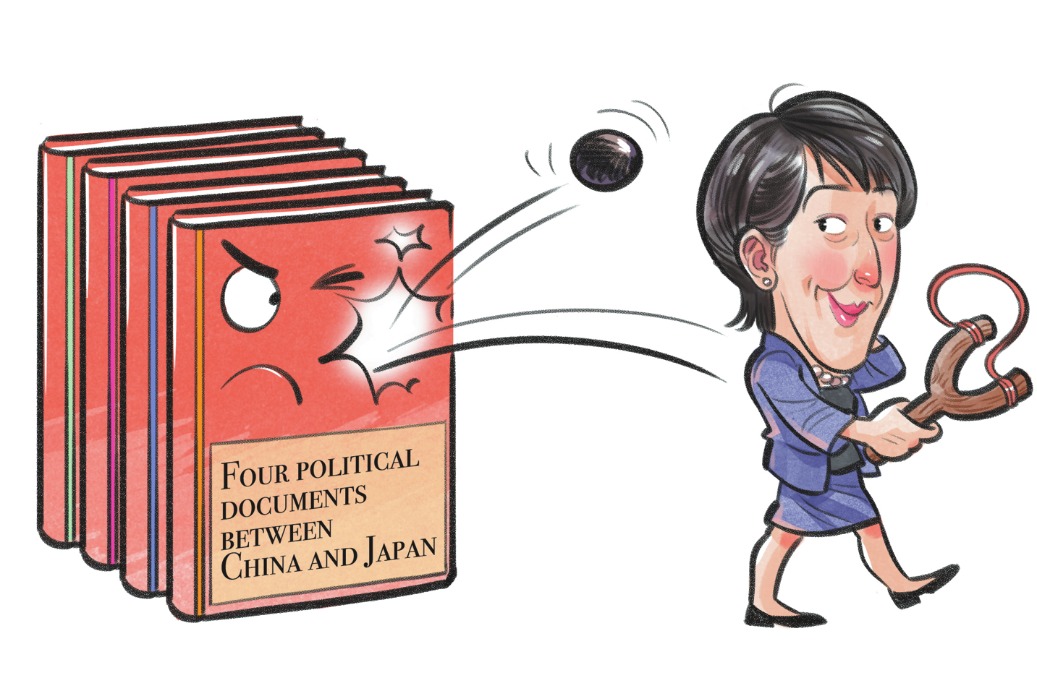Litmus test


Intended to strengthen NATO's cohesion, the so-called China challenge has become a wedge widening its internal fractures
The greatest threat to the transatlantic alliance does not stem from the rise of China, but from the alliance's deepening internal divisions. Since NATO first formally designated China as a strategic concern in 2019, the so-called China challenge has evolved from a potential source of unity into a new driver of division, starkly exposing the alliance's structural contradictions over economic interests, strategic priorities and geopolitical vision. In 2025, it is evident that the "Band-Aid" strategy of invoking an external threat to paper over internal rifts has failed. The alliance's most profound vulnerability remains internal, and its focus on China has only served to expose these fault lines more starkly.
The initial impulse to elevate China to a strategic concern was born of internal disarray. Around 2019, the transatlantic alliance was in the grip of a severe identity crisis. It was convulsed by intense internal turmoil: then-US president Donald Trump publicly questioned NATO's value, threatened to withdraw from the alliance and treated collective security as a transactional arrangement; other member countries' chronic failure to meet the 2-percent-of-GDP defense-spending target caused persistent, bitter disputes; and a growing chorus for European "strategic autonomy", championed by French President Emmanuel Macron, directly challenged the primacy of the United States. In this fragmented context, casting China as a powerful, non-Western "systemic competitor" appeared a "logical" move. It was an attempt to use an external threat as a unifying force to cover the alliance's deep underlying fractures. The hope was that a common challenge would divert attention from internal discord and restore a sense of shared purpose.
Subsequently, the official rhetoric of both NATO and the European Union has hardened into a comprehensive framework. NATO's 2022 Strategic Concept marked a watershed moment by officially labeling China a "systemic challenge" to the alliance's "interests, security and values". This tone has been relentlessly reinforced. NATO's 2023 Vilnius Summit Communiqué pointed to China's "stated ambitions and coercive policies", and its 2024 Washington Summit Declaration went further, explicitly describing China as a "decisive enabler" of the Ukraine crisis. Similarly, the EU — though using the seemingly softer language of "de-risking" — has actively securitized economic relations. Its toolkit includes stringent foreign investment screening, anti-subsidy investigations targeting key industries such as electric vehicles, and ambitious plans for strategic autonomy in critical sectors such as semiconductors and critical minerals. On the surface, this has produced a consistent, high-level narrative seemingly aimed at unified action.
However, the chasm between this tough rhetoric and actual collective action is vast and telling. The primary obstacle is the inescapable gravity of deep economic interdependence. In 2023, the EU-China trade relationship, valued at $783 billion, represents a web of mutual interests that cannot be severed by a declaration alone. This interdependence is not just macroeconomic; it is strategic and deeply embedded. European industries, from automotive to chemicals, rely heavily on the Chinese market and intricate supply chains.
Estimates suggest that Europe's defense industry relies on Chinese intermediate inputs for approximately 9.9 percent of its needs — a significant and troubling figure for a military alliance. Furthermore, Europe's green and digital transitions are vulnerable due to its heavy reliance on China for critical minerals such as the rare earths, gallium and germanium. China's export controls in 2024-2025 triggered supply chain disruptions and price spikes, forcing the EU back to the negotiating table — a clear demonstration of strategic vulnerability that no official statement could wish away.
This economic reality acts as a powerful brake on any unified, confrontational policy, laying bare divergent national interests. The alliance's response to the "China challenge" has been marked not by cohesion, but by hesitation, fragmentation and a glaring gap between word and deed. The divisions are subtle yet pervasive. They manifest as delayed actions, diluted measures and a cacophony of national approaches. Germany, with its massive commercial interests in China, has consistently acted as a moderating force, wary of policies that could provoke retaliatory measures against its core industries. France, while championing strategic autonomy as a means to navigate between the US and China, carefully weighs its own economic and industrial stakes. Meanwhile, some Eastern European states are more inclined to back a harder US line. This lack of coordination underscores an alliance struggling with a fundamental question: how can a traditional military-defense bloc effectively counter an essentially economic and technological "systemic challenger" in a globalized world?
Consequently, the "China challenge" has become a new arena for pre-existing transatlantic and intra-European disputes, rather than a remedy for them. The debate over how to respond to China reflects deeper cracks beneath the alliance. The tension between the French-led drive for "strategic autonomy" and the US desire for transatlantic solidarity against China reflects a fundamental disagreement over Europe's role in a changing world. Furthermore, the Ukraine crisis has intensified debates over strategic priorities. Poland and the Baltic states view any significant pivot of resources and attention to the "Indo-Pacific" with deep suspicion, fearing it will dilute NATO's core defense posture on its eastern flank. This divergence directly affects resource allocation and military planning, creating inherent tensions.
Persistent internal governance challenges, such as the contentious push to raise defense-spending targets beyond 2 percent and deep disagreements over Ukraine's pathway to NATO membership, further sap the political energy and unity required to formulate a coherent China strategy.
The attempt to use the "China challenge" as a strategic "Band-Aid" has backfired spectacularly. Instead of healing internal divisions, it has amplified and exposed them for the world to see. The alliance must now confront its internal contradictions under the full glare of the geopolitical spotlight. The real test for NATO and the transatlantic partnership is not China's rise, but their ability to adapt to a 21st-century reality, in which economic interdependence and geopolitical competition coexist. The outdated Cold War mentality of forging a common enemy is ill-suited to this task, overlooking the nuanced, interconnected nature of contemporary global challenges.
Lasting unity cannot be manufactured by external threats; it must rest on a shared, realistic understanding of the global landscape and a genuine commitment to dialogue, respect for sovereignty and cooperative solutions to common challenges. Treating China as a partner in tackling global problems, rather than an adversary to be contained, ultimately serves the interests of all parties. The "China challenge" has thus served as a mirror, reflecting the alliance's internal frailties and spurring a painful but necessary redefinition of its purpose for a new era.
The author is a professor at the Institute of West-Asian and African Studies at the Chinese Academy of Social Sciences. The author contributed this article to China Watch, a think tank powered by China Daily.
The views do not necessarily reflect those of China Daily.
Contact the editor at editor@chinawatch.cn.

































